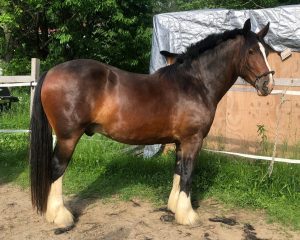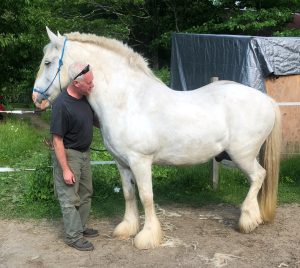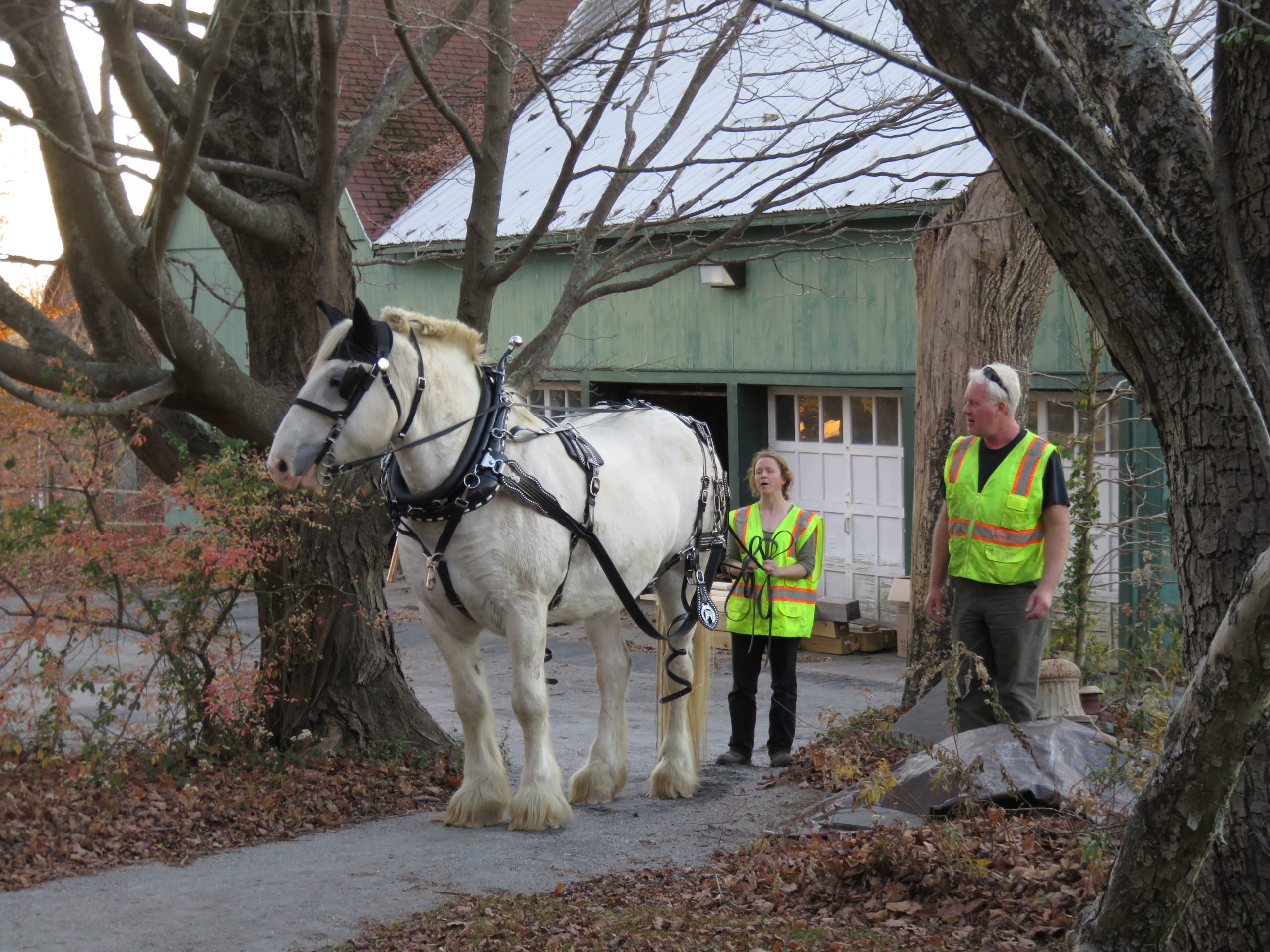TALKING ABOUT HORSES
If you’ve given a thought to draft horses, you probably picture Clydesdales pulling the Budweiser wagon but least a dozen breeds of draft horses are at work today in woods and fields, along with oxen, water buffalo, donkeys, and mules.
 Now, inspired by family history with horse logging, Scott Rogers is currently training two Shires, Sonny (left) and Buddy (below), to work in the woods. He admits, “Family history in logging did get me thinking about horse logging. I remember going to my grandparents in Patten, Maine. All their wood went down Penobscot River to be milled. Now that generation is gone.” His great-grandfather, James Leigh McKinney cared for more than 300 horses in the northern Maine woods logging camps for the Eastern Manufacturing Corp., a large paper mill in Brewer Maine. He loved horses and horses loved him.
Now, inspired by family history with horse logging, Scott Rogers is currently training two Shires, Sonny (left) and Buddy (below), to work in the woods. He admits, “Family history in logging did get me thinking about horse logging. I remember going to my grandparents in Patten, Maine. All their wood went down Penobscot River to be milled. Now that generation is gone.” His great-grandfather, James Leigh McKinney cared for more than 300 horses in the northern Maine woods logging camps for the Eastern Manufacturing Corp., a large paper mill in Brewer Maine. He loved horses and horses loved him.
Scott works with the Shire, is a very rare breed. It was the primary draft horse in England, renowned for its strength and personable nature. Those qualities made it valuable as a war horse in WWI when this breed was almost slaughtered out of existence. Sonny and Buddy are two of perhaps five to ten in the state, maybe fewer.
breed. It was the primary draft horse in England, renowned for its strength and personable nature. Those qualities made it valuable as a war horse in WWI when this breed was almost slaughtered out of existence. Sonny and Buddy are two of perhaps five to ten in the state, maybe fewer.
Twelve-year old Buddy was trained by an Amish farmer over three summers. Scott’s wife Anne explained, “First they learn to stop. You start with the brakes. Then you start walking them and the gas pedal is the last thing they learn. They have to be focused on you. They can’t respond when a twig snaps or a fly buzzes.”
Scott plans to start on his own property by having Buddy train the younger Sonny. Only three and still growing, Sonny won’t be ready for real work for another year. Scott is leaning towards a hybrid system in which horses do short-term skidding to bring logs to a main skid road or landing. From there, a forwarder can bunch and stack the log piles. So Scott has bought a Gaffner forwarder fittingly called an Iron Mule to do that job. “It’s small and useful. It’s economical to operate and parts are available.” he explained.
Scott sees value for this hybrid system in Connecticut. It uses very small landings and can work on very small parcels, 50 acres and under. “I can't tell you how many landowners over the last 40 years I have talked with who would love to have a timber harvest to improve the health of their forest but have a real hard time finding anybody that will do it. These parcels also have access issues as well that make it hard for the guys with larger equipment to operate in. The other problem with the big equipment is that they require very large landings which start to make the landing look to the public like a house lot site.”
The horses are a low impact approach that is well suited to “worst first” selective harvesting, a form of harvest that emphasizes cutting the poorest quality trees first and minimizing the impact on preferred trees. The state of Virginia has found this method a positive way to improve regeneration of wood lots otherwise too small or unprofitable for large operations and where clear cutting is undesirable.
It is definitely not the fastest or most economically profitable approach. Nonetheless, there is a niche market for landowners who want to take a different approach or are managing their woods for aesthetics, recreation, and wildlife in addition to timber.
Rogers also thinks that having horses do the skidding may help create a more positive view of timber harvesting in peoples’ minds here in CT. “We'll see,” he concluded.

Anne and Scott Rogers training Buddy.
Get in Touch
CT Professional Timber Producers Association, Inc.
1133 Litchfield Road
Norfolk, CT 06058
860 948-0432
[email protected]
Learn More
Send Us news
If you'd like to submit an event or a timber-related news item, please send us an email.
